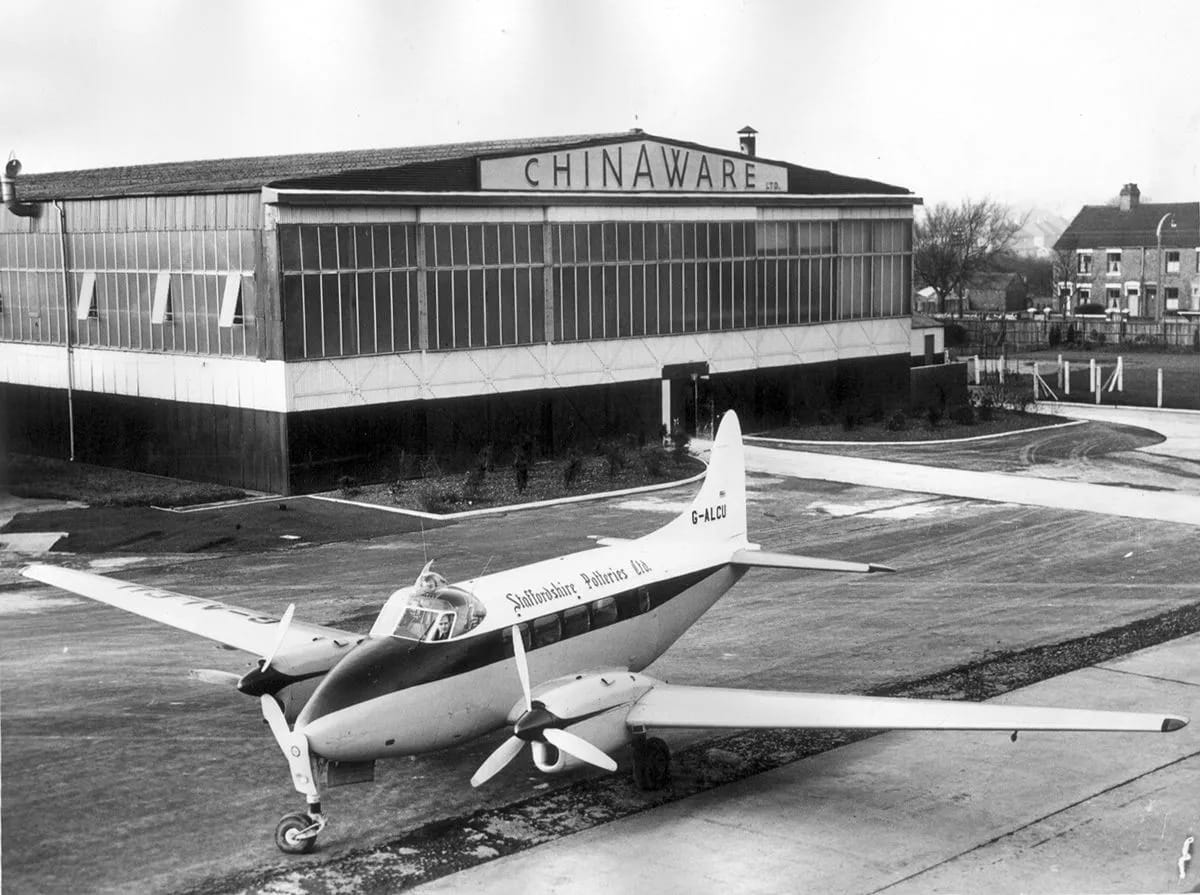Meir Aerodrome, also known as Stoke-on-Trent Municipal Airport, has a rich and varied history that mirrors the broader changes in aviation and military history throughout the 20th century. Located in Meir, Stoke-on-Trent, the aerodrome played significant roles in both World Wars and underwent several transformations in its function and structure.
Watch my video about Meir Aerodrome on YouTube
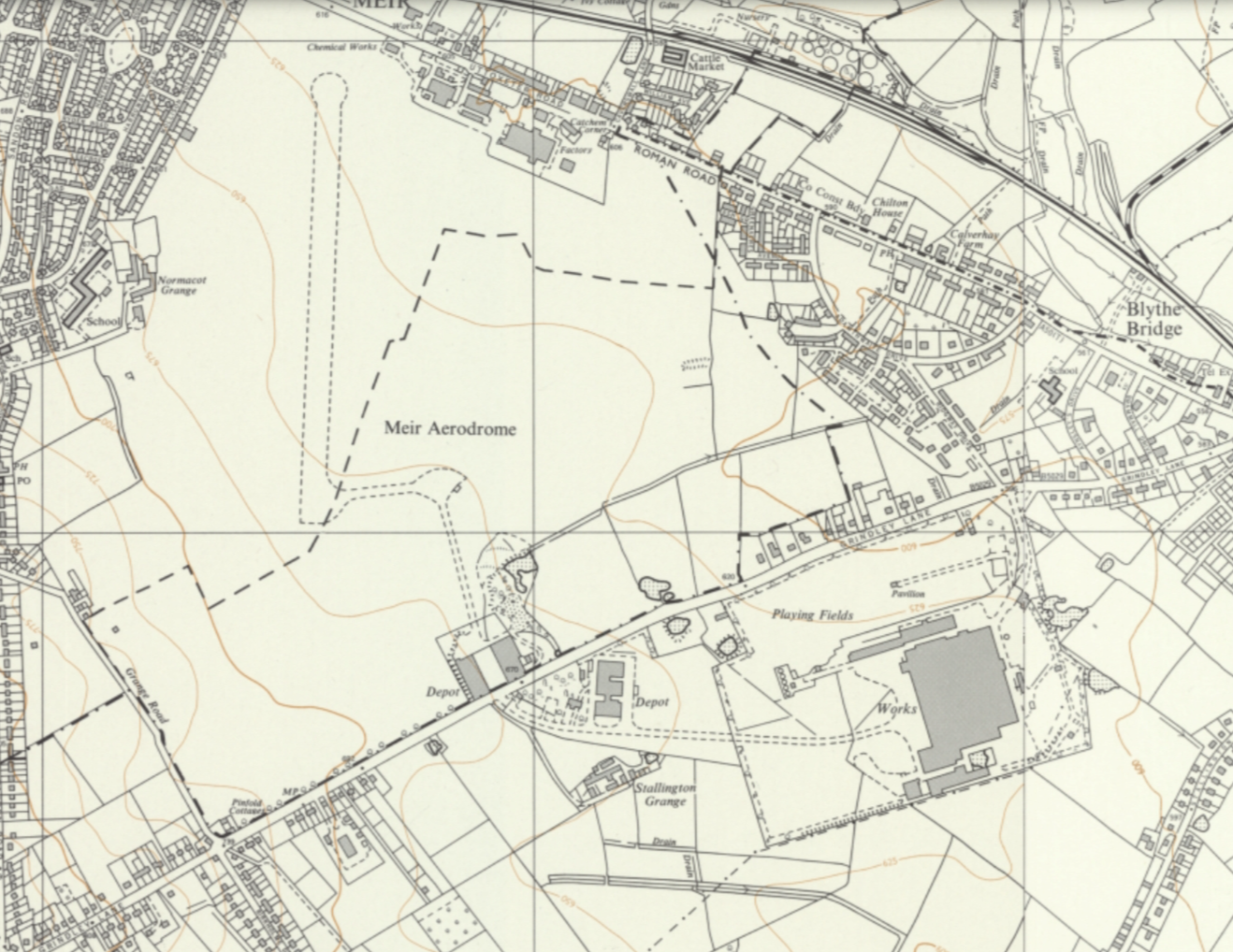
Establishment of the Aerodrome
The history of Meir Aerodrome begins in the early 20th century when its potential as a site for aviation activities was first recognised. The flat terrain and open fields of Meir were ideal for launching and landing aircraft, and this geographic advantage did not go unnoticed by local aviation enthusiasts. The land at Meir was first used for flying in 1916 when the British Royal Flying Corps (RFC) began using it for training and operational flights.
These early pioneers identified Meir as an optimal location due to its proximity to industrial hubs like Stoke-on-Trent and Staffordshire, which provided essential logistical support. By 1910, the area saw increased activity from early aviators and flying clubs, although it was still relatively undeveloped with only basic facilities such as wooden hangars and maintenance sheds.
Despite these modest beginnings, Meir quickly became a focal point for aviation in the region.
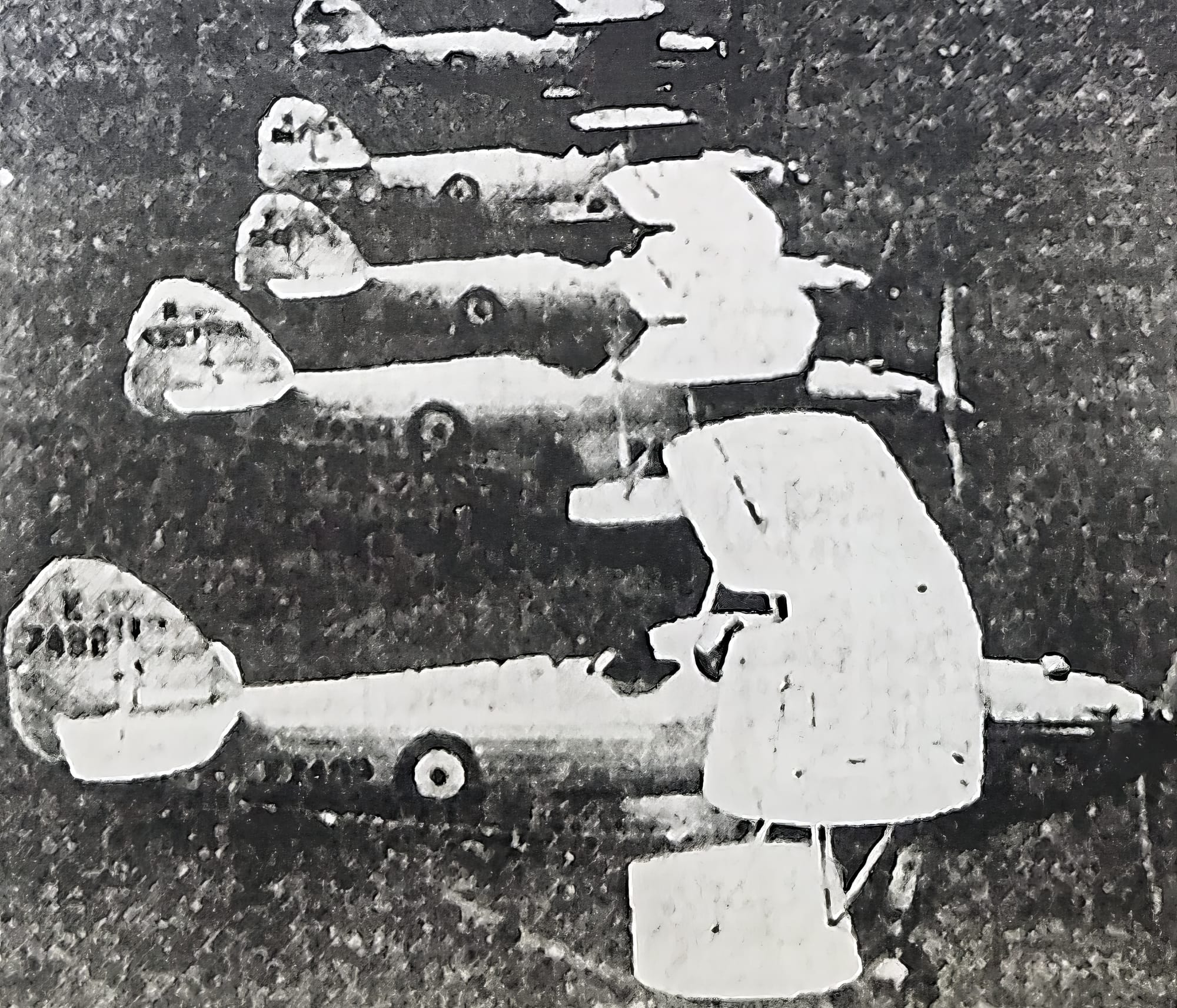
WWI and Military Utilisation
With the outbreak of the First World War in 1914, the strategic importance of aviation in modern warfare was quickly recognized by the British government. Initially open farmland, Meir Aerodrome was requisitioned in 1915 and first used for flying by the Royal Flying Corps (RFC) in 1916. In 1917, the RFC established a significant base at Meir Aerodrome due to its advantageous location, flat terrain, and existing aviation infrastructure. This marked a pivotal transformation in the aerodrome's function and scope.
The decision to repurpose Meir Aerodrome for military operations was driven by several factors. Its proximity to industrial centres made it well-positioned for logistical support, while its flat terrain and existing facilities made it suitable for rapid expansion and deployment of aircraft. The RFC utilized Meir Aerodrome primarily as a training ground for pilots and as a site for aircraft assembly and repair.
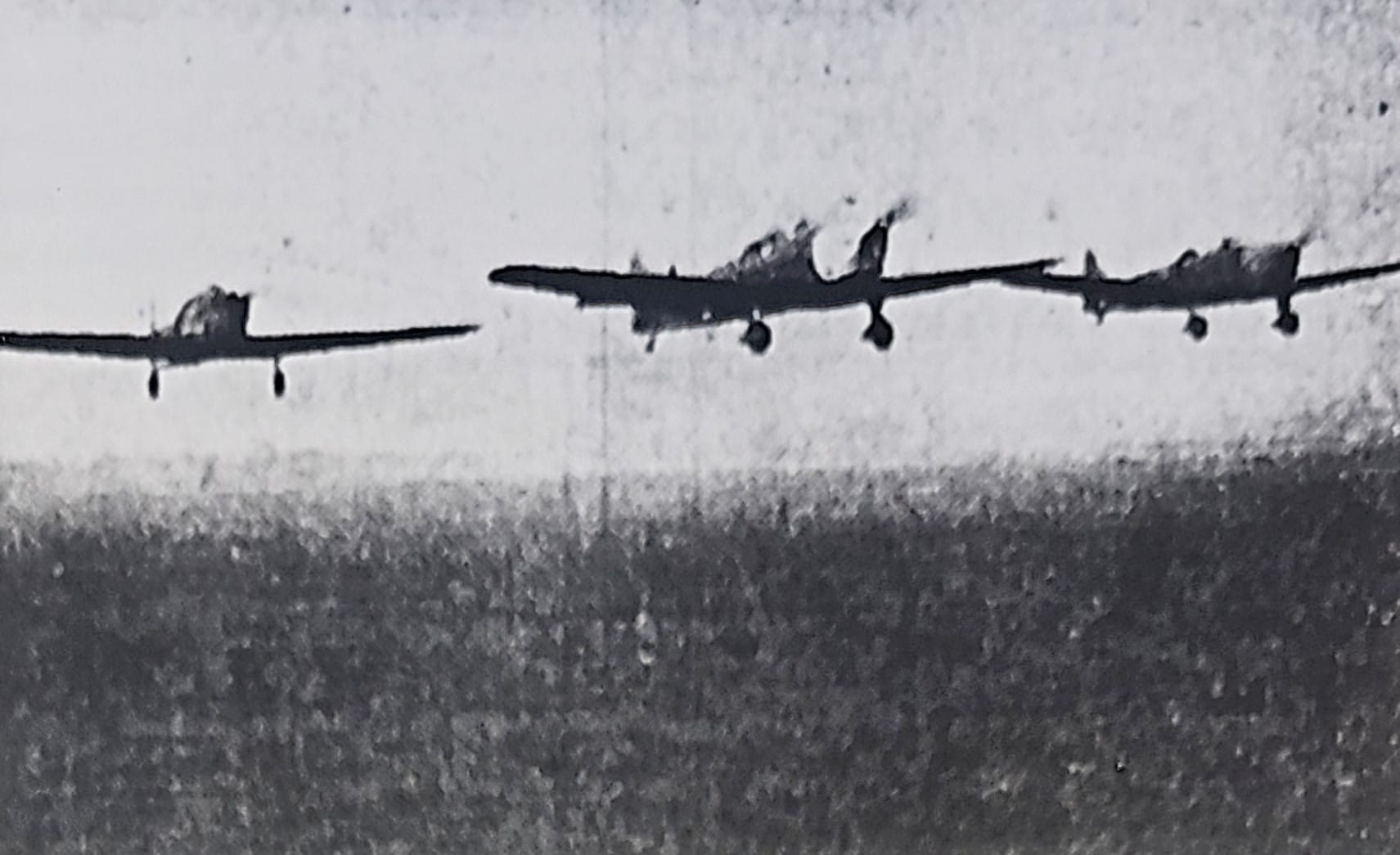
During the war, the aerodrome underwent extensive development to accommodate its new military role. Several temporary structures were erected, including barracks for personnel, maintenance sheds, and additional hangars for aircraft. These expansions were necessary to support the influx of military equipment and the increasing number of personnel stationed at Meir.
Training at Meir Aerodrome was intensive and comprehensive. Pilots underwent rigorous instruction in various aspects of aerial combat, navigation, and aircraft maintenance. The aerodrome's facilities were used to assemble and repair aircraft, ensuring that operational squadrons could be maintained at full strength. This was crucial for the RFC's efforts on the Western Front and other theatres of war.
One notable aspect of Meir Aerodrome's military utilization was its role in the training of reconnaissance pilots. These pilots were tasked with gathering crucial intelligence on enemy positions and movements, a function that proved vital to the overall war strategy. The aerodrome's strategic importance was further underscored by its use as a hub for aircraft logistics, facilitating the rapid deployment of newly built or repaired aircraft to active combat zones.
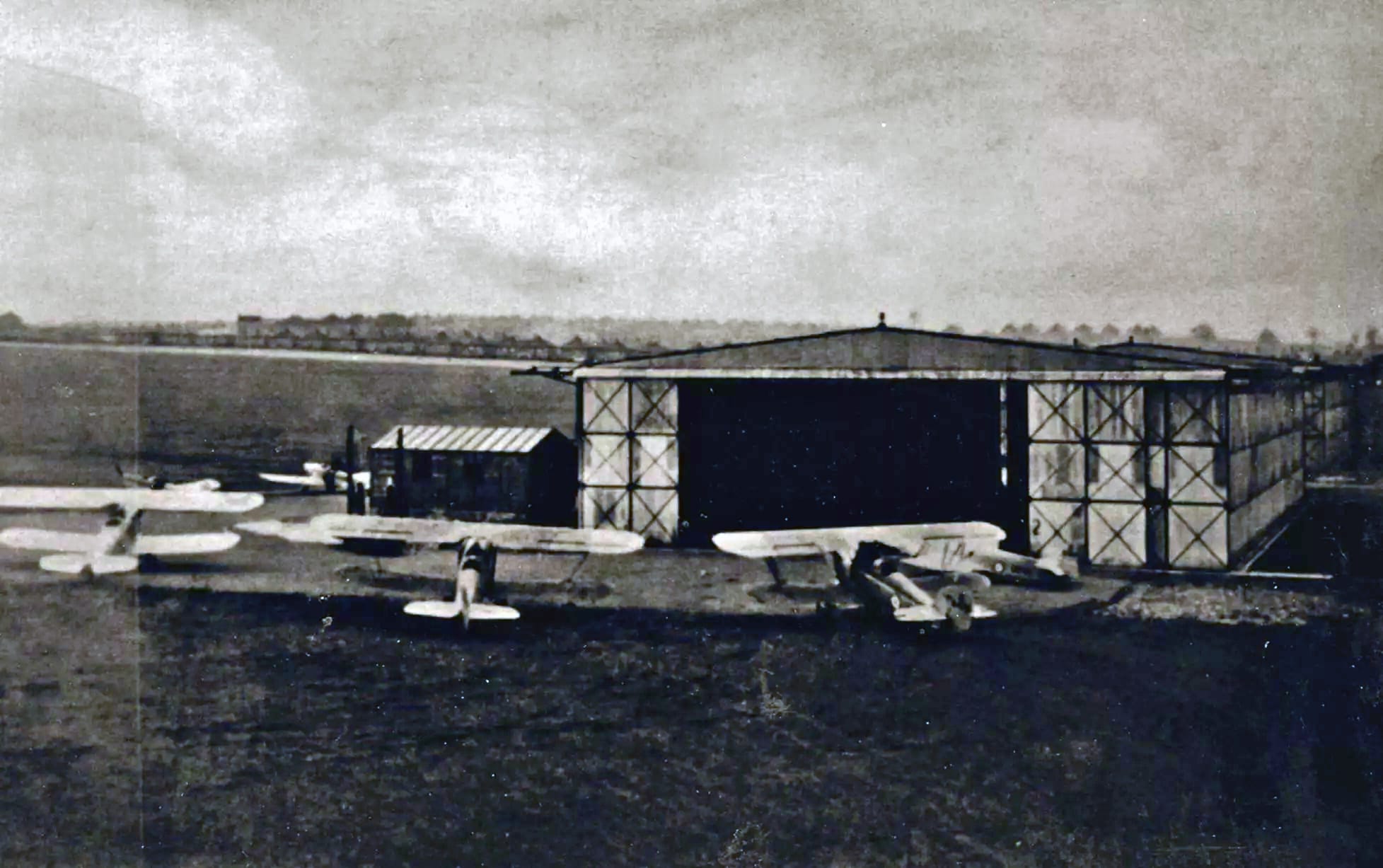
Interwar Period
Post-WWI Demobilisation and Civil Aviation
Following the end of the First World War in 1918, Meir Aerodrome entered a period of demobilisation and transition back to civilian use. The war had brought significant infrastructural development to the aerodrome, including temporary military structures like barracks, maintenance sheds, and additional hangars. However, with the cessation of hostilities, these military installations were no longer needed for their wartime purposes.
The process of demobilisation involved dismantling many of these temporary military structures. The Royal Flying Corps (RFC), which had played a crucial role during the war, was reorganised into the Royal Air Force (RAF) in 1918. As part of this restructuring, the aerodrome was gradually returned to its pre-war state, albeit with improved facilities and a legacy of military aviation experience.
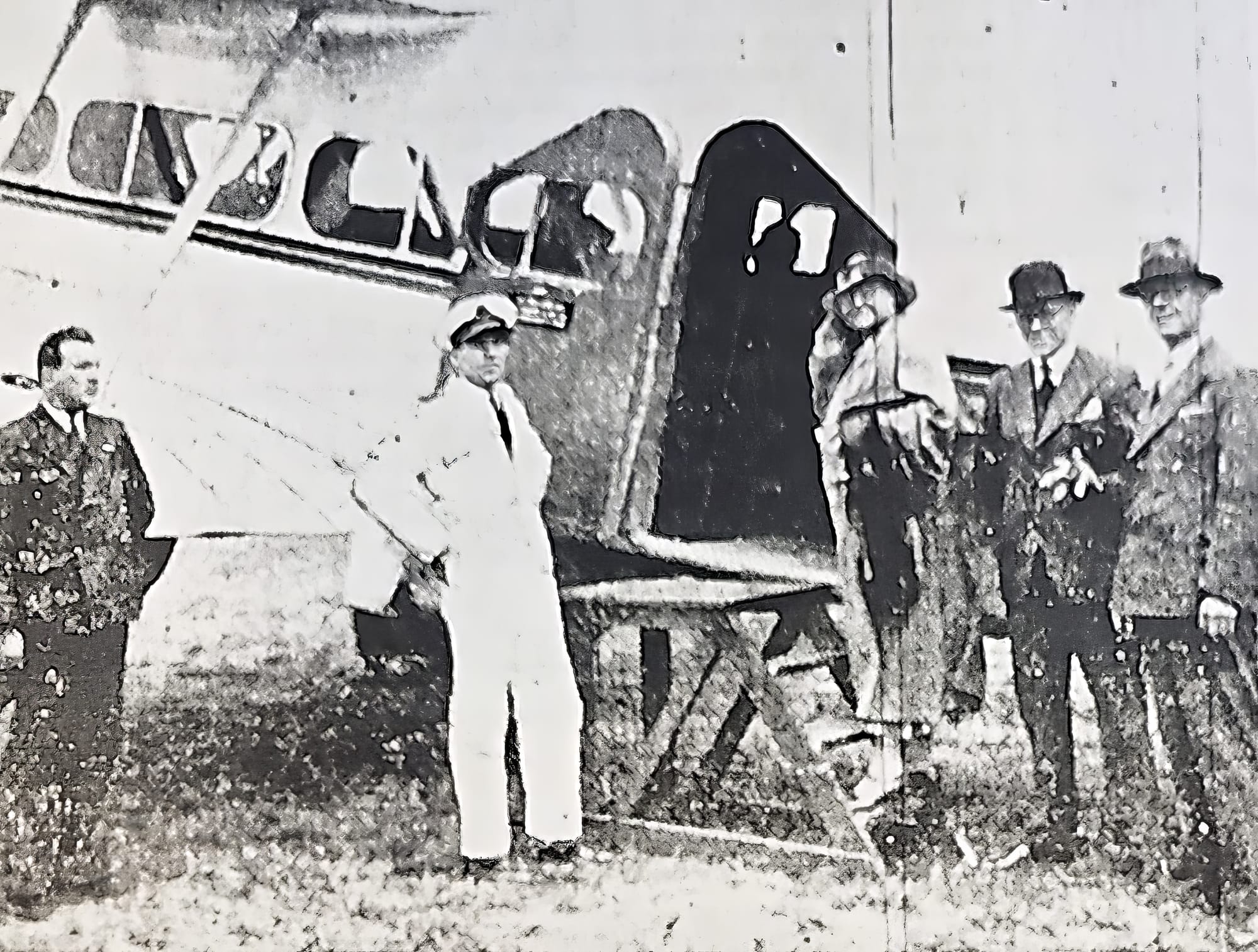
Despite the removal of many wartime structures, Meir Aerodrome continued to serve as a hub for aviation enthusiasts and small commercial operations. The interwar period saw a resurgence of civilian aviation activities. Private pilots and flying clubs resumed their operations, taking advantage of the aerodrome's improved infrastructure. The existing runways and hangars, though initially constructed for military use, proved beneficial for civilian purposes.
In the late 1920s, significant steps were taken to formalise its development. The pivotal moment came in 1929 when the local city council purchased 154 acres of land in Meir for £11,850 (equivalent to £628,902.74 in 2024). This acquisition marked the beginning of a new era for the aerodrome, laying the groundwork for its future development and its eventual role as an important site for both civil and military aviation.
The purchase by the city council was a strategic move that underscored the growing importance of aviation in the region. The acquisition not only secured the land for future aviation use but also demonstrated a commitment to developing Meir into a significant aerodrome. This period marked the transition from the site's informal use by aviation enthusiasts to a more structured and planned development, setting the stage for the subsequent establishment of Meir Aerodrome as a key aviation hub.
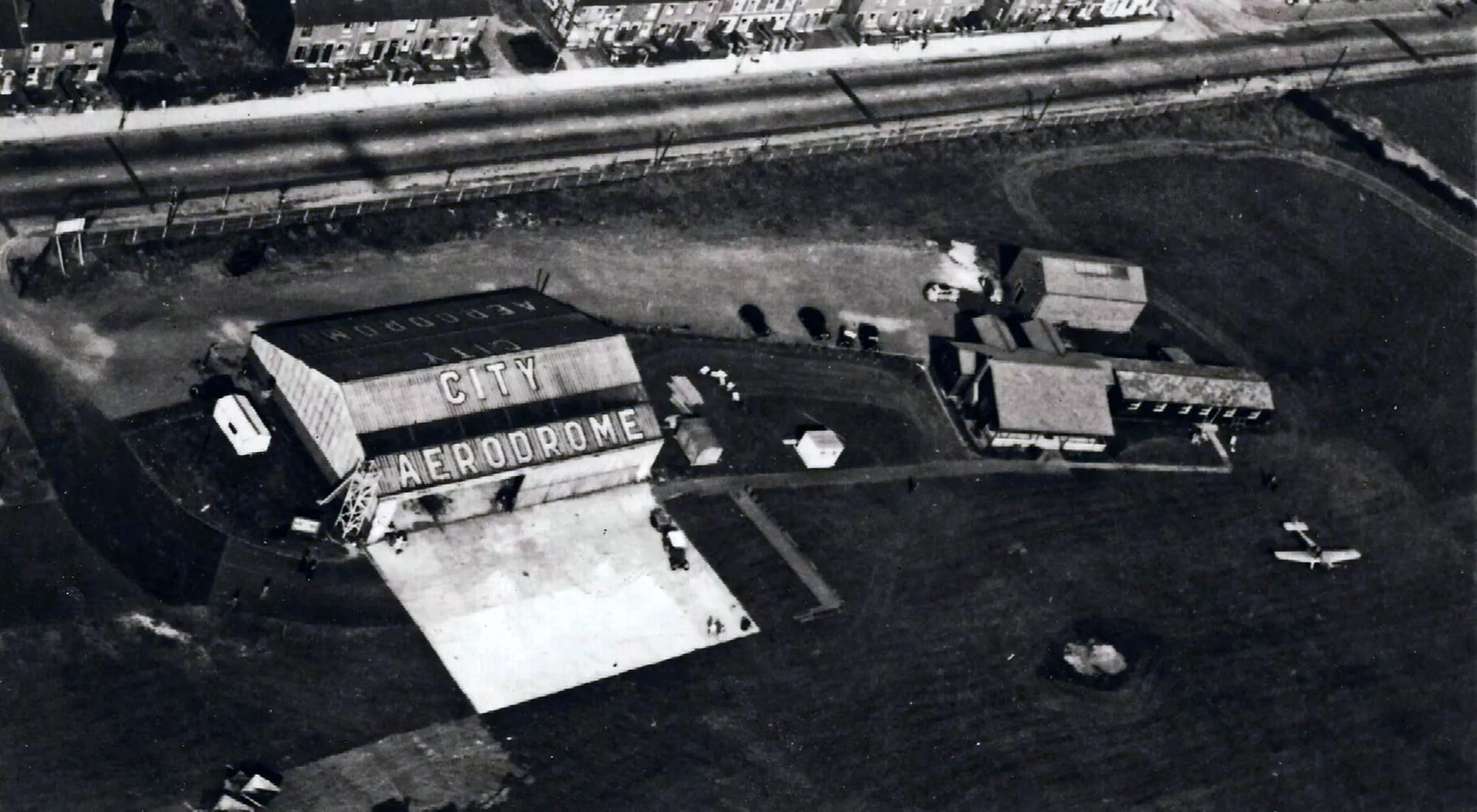
During the 1920s and 1930s, Meir Aerodrome underwent modest development to better accommodate its new civilian role. The runway was improved to support a wider range of aircraft, and more permanent hangars and administrative buildings were constructed. These enhancements were aimed at fostering a thriving aviation community and supporting small commercial aviation enterprises.
Meir Aerodrome also played a role in the burgeoning commercial aviation sector. The site hosted various aviation events, including air shows and exhibitions, which drew large crowds and showcased the latest advancements in aircraft technology. These events helped to maintain the aerodrome's prominence in the local community and among aviation enthusiasts.
One notable development during this period was the establishment of more formalised aviation training programmes. The aerodrome's legacy as a training ground during the war translated into civilian pilot training schools, which attracted aspiring pilots from across the region. These schools provided comprehensive training programmes, ensuring a steady supply of skilled pilots for both private and commercial aviation.
Despite the economic challenges of the interwar period, Meir Aerodrome managed to maintain its status as an important aviation hub. The combination of improved infrastructure, ongoing aviation events, and pilot training programmes contributed to its sustained relevance. However, the looming threat of another global conflict would once again transform Meir Aerodrome, as the world moved towards the outbreak of the Second World War.
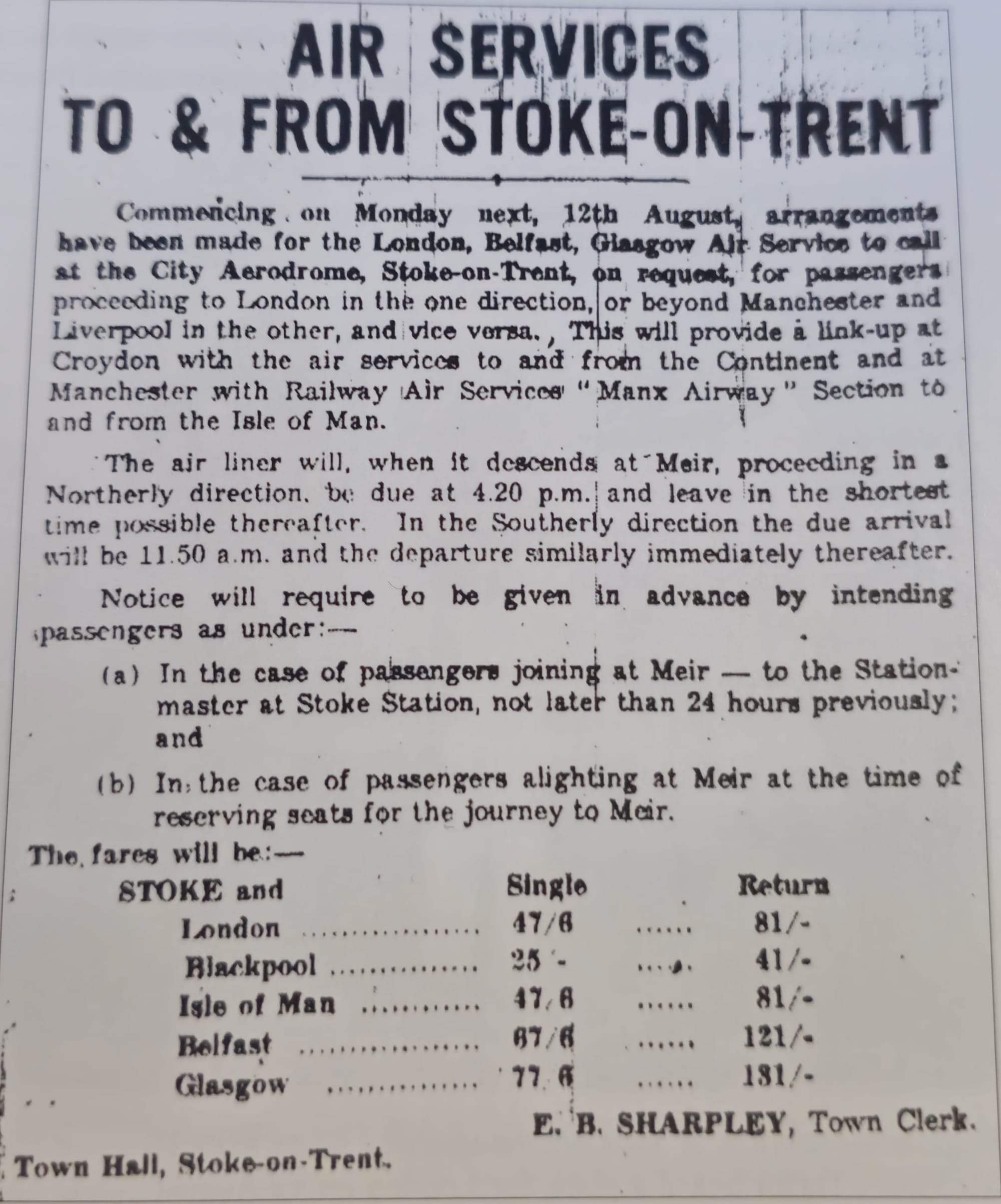
The Growth of Commercial Aviation
The 1920s and 1930s marked a significant period of growth for commercial aviation, and Meir Aerodrome was well-positioned to benefit from this trend. During these decades, the aerodrome transitioned from its post-World War I demobilisation phase into a more active role in the burgeoning field of civil aviation.
As commercial aviation began to take off globally, Meir Aerodrome capitalised on its strategic location in Staffordshire. The aerodrome served as a stopover point for various domestic flights, facilitating travel between major cities in the UK. This period saw an increase in passenger flights and the transportation of goods by air, highlighting the growing importance of aviation as a means of commercial transport.
To accommodate the rising traffic, several improvements were made to the aerodrome’s infrastructure. The runways were extended and strengthened to support larger and more modern aircraft. Although the facilities at Meir remained relatively modest compared to the larger, more established airports of the era, these upgrades were crucial in maintaining its operational capabilities and ensuring safety. The local city council's purchase of 154 acres of land in 1929 for £11,850 (equivalent to £628,902.74 in 2024) was a pivotal move, marking the beginning of a new era for the aerodrome.
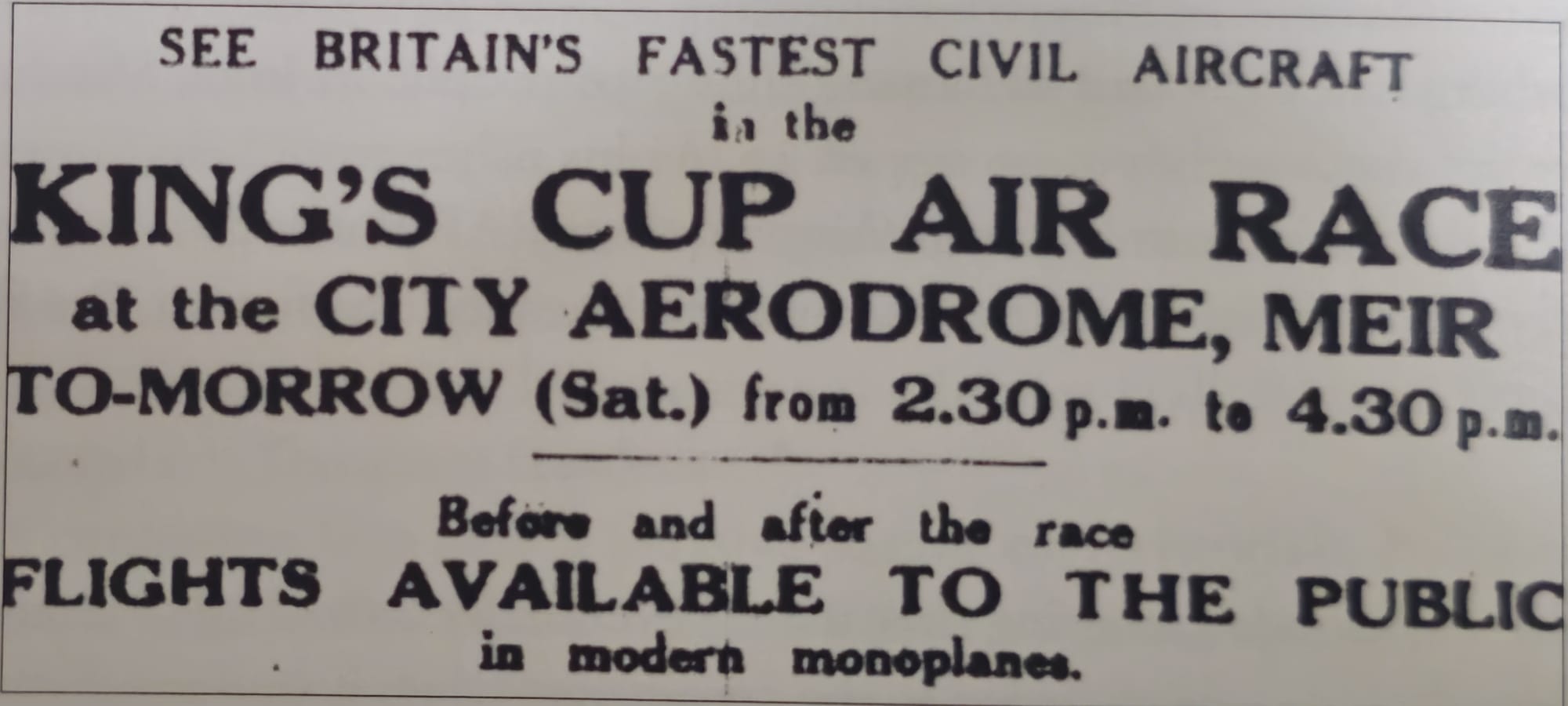
Hosting Aviation Events
One of the key activities that boosted Meir Aerodrome’s visibility and popularity during the 1920s and 1930s was its hosting of air shows and other aviation-related events. These events drew large crowds, fascinated by the spectacle of flight and the technological advancements in aviation. Air shows featured aerobatic displays, demonstrations of new aircraft models, and competitive flying events. Such gatherings not only entertained the public but also promoted aviation and inspired future aviators.
For example, the 1927 air show at Meir attracted thousands of spectators and featured the latest aircraft models from leading manufacturers. This event included aerobatic performances by renowned pilots like Alan Cobham, whose daring stunts captivated the audience. In 1935, another significant air show was held, showcasing advancements in aviation technology and drawing even larger crowds.
The aerodrome became a regular venue for these high-profile events, which were often covered by local and national media. This publicity helped solidify Meir Aerodrome’s reputation as a significant site for aviation enthusiasts and professionals alike. The influx of visitors during these events also had a positive economic impact on the surrounding area, boosting local businesses and services.
These events were more than just entertainment; they played a crucial role in promoting aviation and inspiring the next generation of aviators. The combination of spectacular displays, cutting-edge technology, and media coverage ensured that Meir Aerodrome remained at the forefront of British aviation during this period.
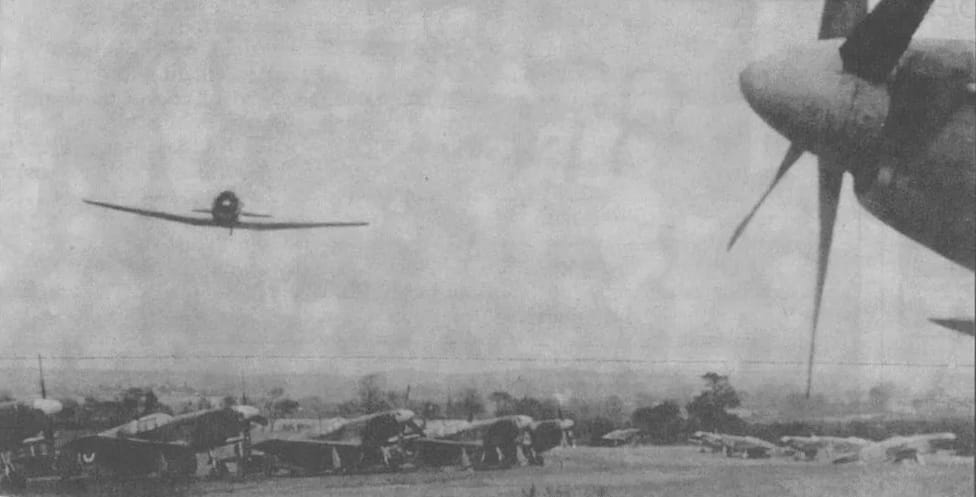
WWII and the Transformation of Meir Aerodrome
With the advent of the Second World War in 1939, Meir Aerodrome once again assumed a crucial military role. Recognising its strategic importance, the British government requisitioned the site for the Royal Air Force (RAF), leading to significant expansion and modernisation efforts to support the war effort. This period marked a transformative phase for the aerodrome as it adapted to meet the demands of a global conflict.
The RAF's takeover of Meir Aerodrome was a direct response to the escalating war in Europe. The aerodrome's location in Staffordshire made it an ideal site for military operations, providing a base for various RAF squadrons. The government initiated an extensive programme of expansion and modernisation to prepare Meir for its new military functions.
To accommodate the increased military activity, new runways were laid to handle the heavier and more advanced aircraft used during the war. These runways were built to higher specifications to support the frequent take-offs and landings required for military operations. The expansion also included the construction of additional hangars to house a larger fleet of aircraft. These hangars were designed to provide better protection and more efficient maintenance facilities.
The aerodrome also saw the construction of new barracks to accommodate the influx of RAF personnel. These barracks were essential for housing pilots, aircrew, and support staff who were stationed at Meir. In addition to living quarters, the site was equipped with various support facilities, including workshops, fuel storage tanks, and ammunition depots, to ensure the operational readiness of the squadrons.
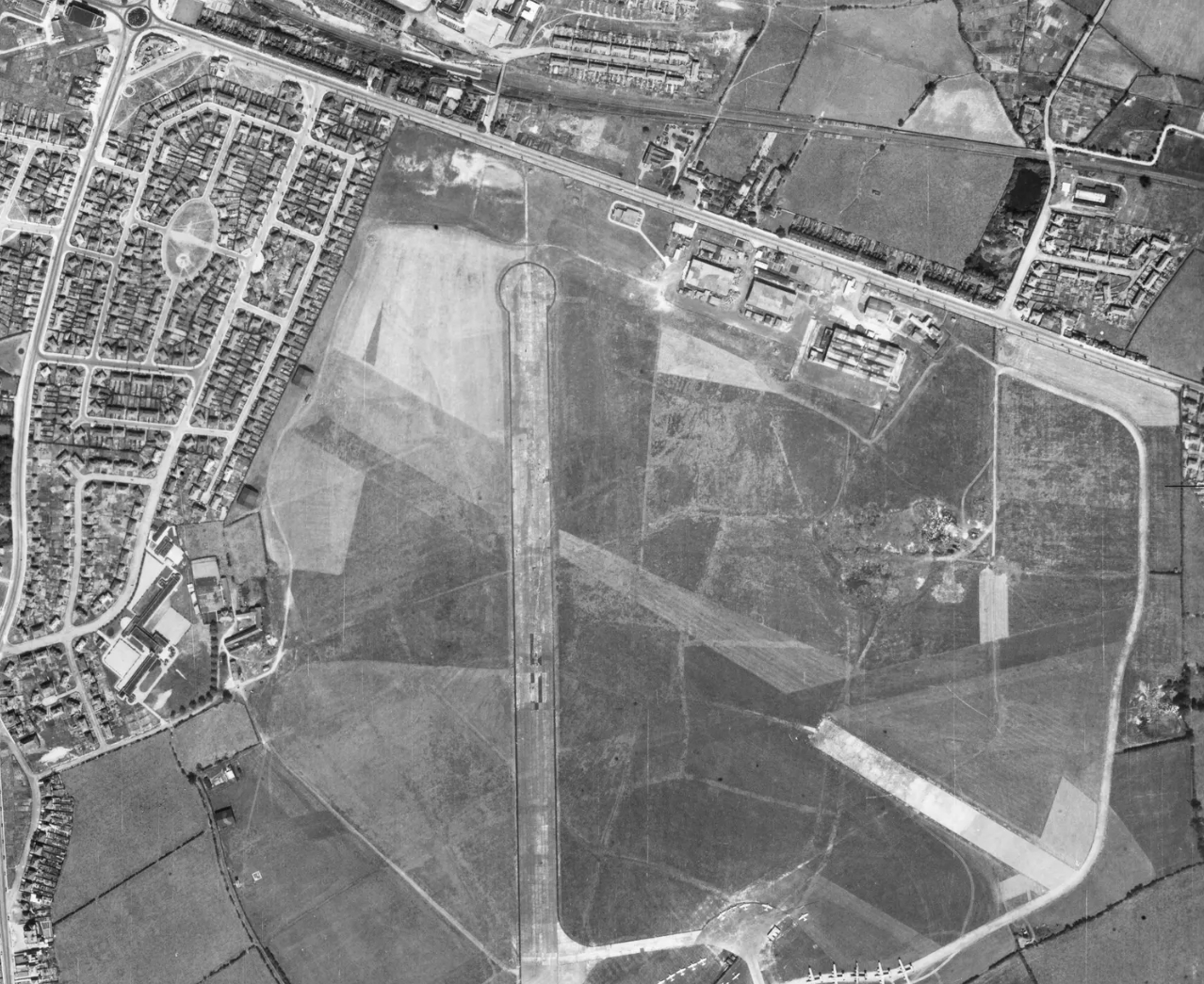
RAF Squadrons at Meir
With the advent of the Second World War in 1939, Meir Aerodrome once again assumed a crucial military role. Recognising its strategic importance, the British government requisitioned the site for the Royal Air Force (RAF), leading to significant expansion and modernisation efforts to support the war effort. This period marked a transformative phase for the aerodrome as it adapted to meet the demands of a global conflict.
The RAF's takeover of Meir Aerodrome was a direct response to the escalating war in Europe. The aerodrome's location in Staffordshire made it an ideal site for military operations, providing a base for various RAF squadrons. The government initiated an extensive programme of expansion and modernisation to prepare Meir for its new military functions.
To accommodate the increased military activity, new runways were laid to handle the heavier and more advanced aircraft used during the war. These runways were built to higher specifications to support the frequent take-offs and landings required for military operations. The expansion also included the construction of additional hangars to house a larger fleet of aircraft. These hangars were designed to provide better protection and more efficient maintenance facilities.
The aerodrome also saw the construction of new barracks to accommodate the influx of RAF personnel. These barracks were essential for housing pilots, aircrew, and support staff who were stationed at Meir. In addition to living quarters, the site was equipped with various support facilities, including workshops, fuel storage tanks, and ammunition depots, to ensure the operational readiness of the squadrons.
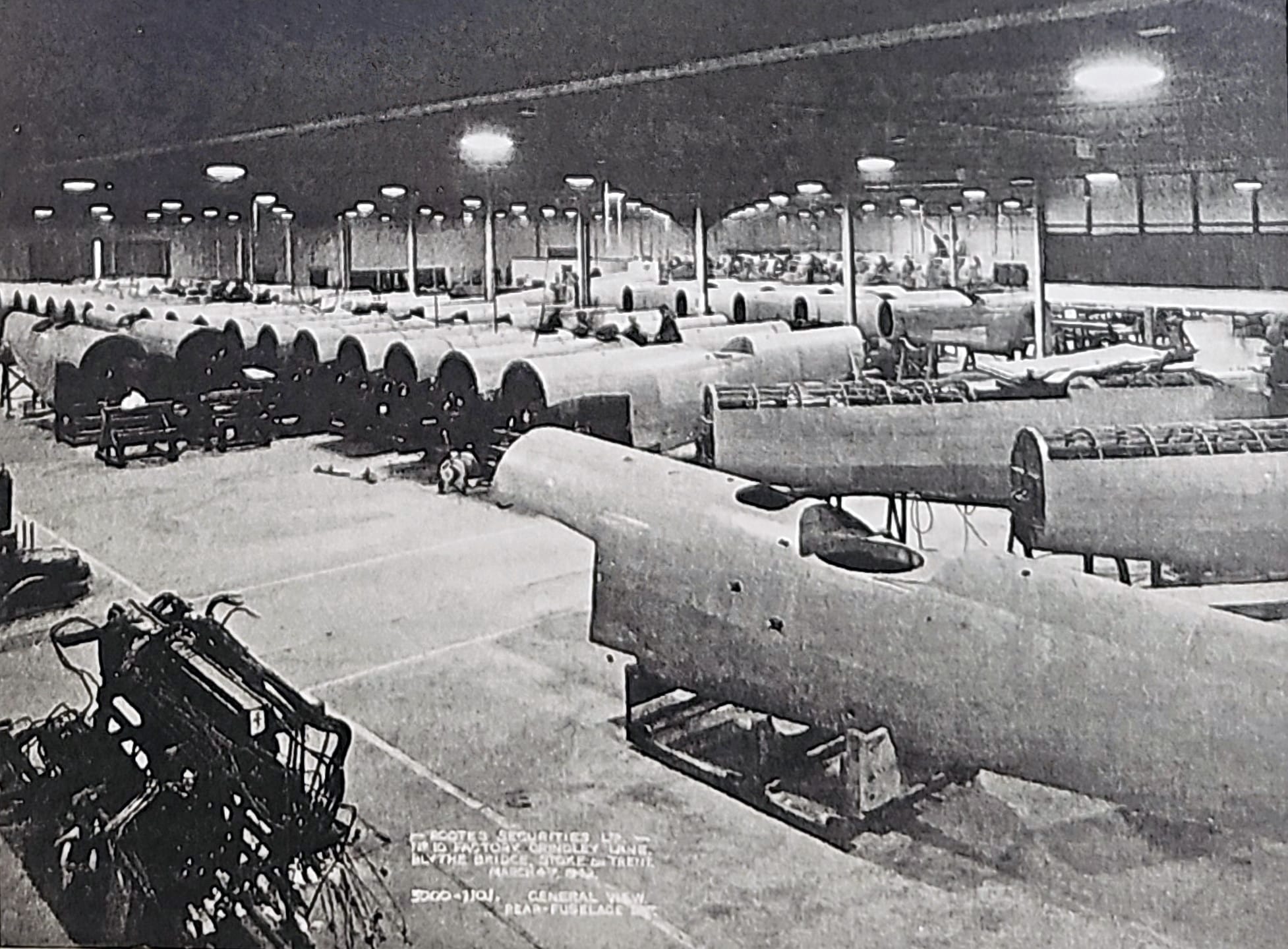
The Rootes Factory at Blythe Bridge
During World War II, the Rootes Group factory in Blythe Bridge emerged as a pivotal site within the British war effort, transitioning from a peacetime automotive manufacturer to a crucial wartime production hub. This transformation was emblematic of the broader industrial mobilisation that defined Britain’s home front strategy.
Before the outbreak of war, the Rootes Group was renowned for its production of cars and commercial vehicles. However, with the advent of hostilities, the factory at Blythe Bridge, along with other Rootes facilities, swiftly pivoted to the manufacturing of military equipment. This strategic shift was imperative as the demand for military vehicles, aircraft components, and other essential wartime materials surged.
One of the most notable wartime contributions of the Blythe Bridge factory was its involvement in aircraft manufacturing. The facility played a significant role in the assembly and repair of various aircraft models, including the Bristol Blenheim bomber. The Blenheim was integral to early wartime efforts, particularly in reconnaissance and bombing missions, highlighting the factory’s crucial role in bolstering the Royal Air Force’s capabilities.
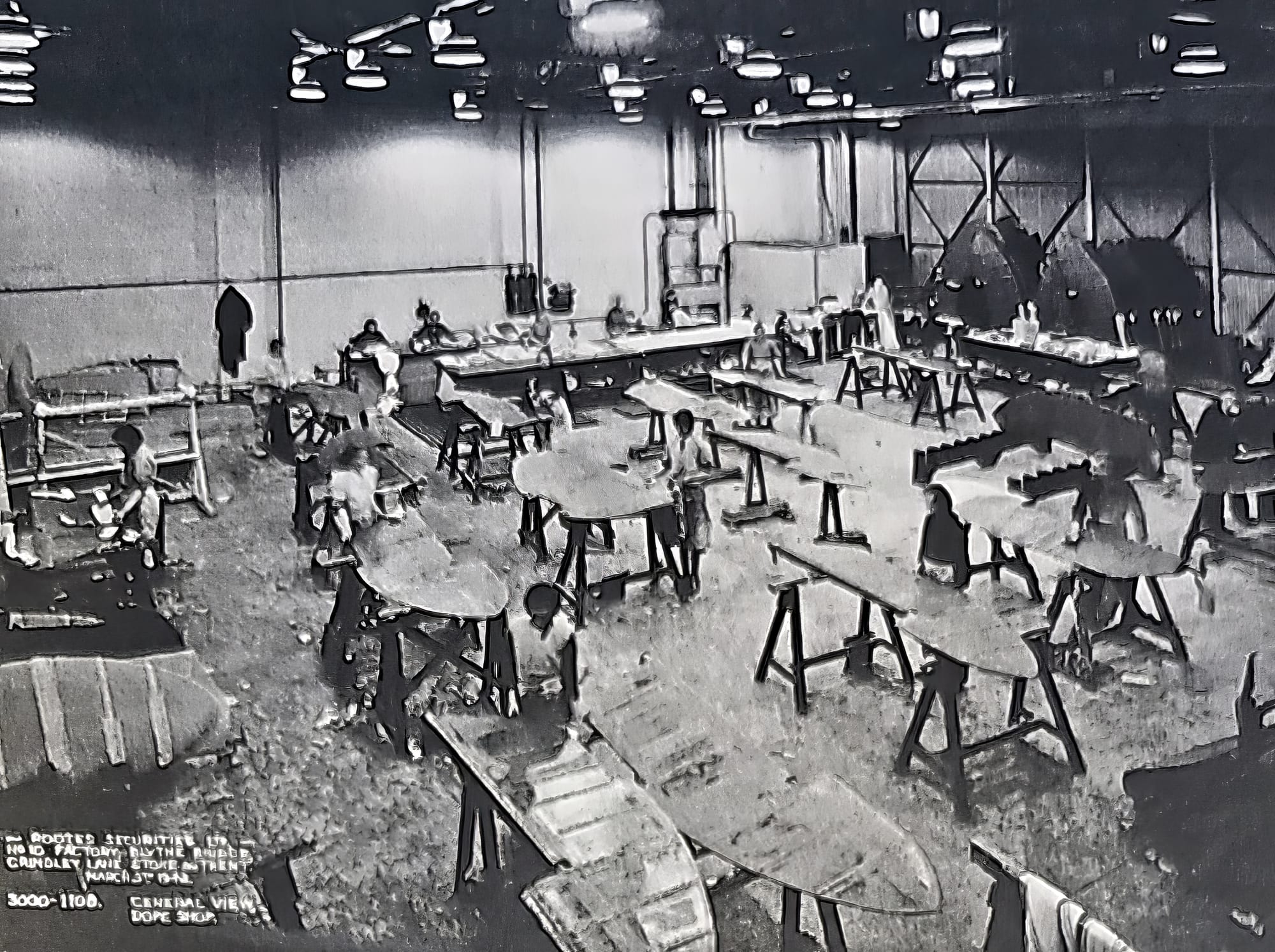
In response to the heightened threat of enemy bombing raids, the British government implemented the "Shadow Factory" scheme. This initiative aimed to disperse production facilities to mitigate the risk of concentrated bomb damage. The Rootes Group factories, including Blythe Bridge, were incorporated into this scheme, operating as shadow factories. This not only increased production capacity but also ensured a more resilient supply chain for military equipment.
The war effort necessitated a significant expansion of the workforce at Blythe Bridge. Many women stepped into roles traditionally held by men, who were serving in the military. This marked a significant social shift, with women becoming indispensable to the factory’s operations. Their contributions were vital in maintaining production levels and ensuring a steady flow of military equipment, reflecting the broader societal changes spurred by the war.
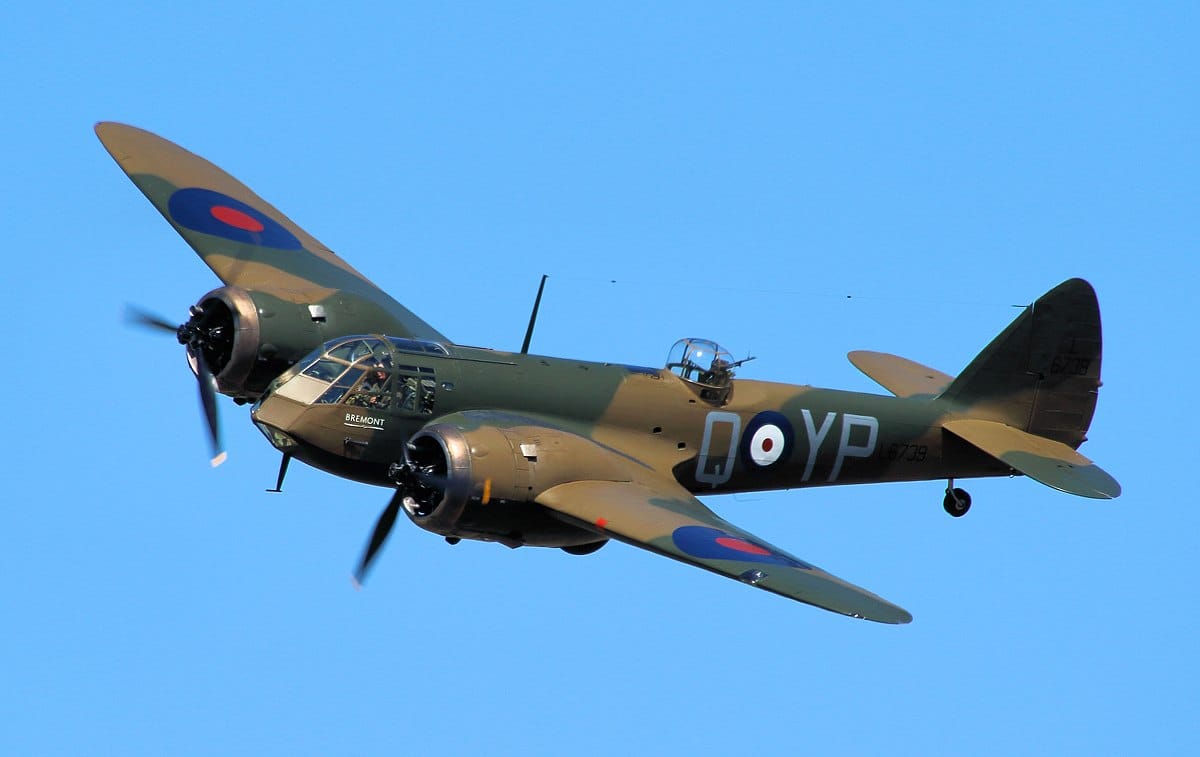
Aircraft Production
The Rootes Factory was instrumental in producing key aircraft types for the RAF. One of the main aircraft produced at the factory was the Bristol Blenheim, a light bomber that played a crucial role in the early years of the war. The Blenheim was known for its versatility and was used in various roles including bombing, reconnaissance, and as a night fighter.
Another significant aircraft produced at the Rootes Factory was the Beaufighter. These aircraft were towed from the factory, along Grindley Lane to the airfield for testing.
They also modified Mustangs and assembled Harvards that arrived from America.
During its peak operation, the Rootes Factory at Blythe Bridge was highly productive. The factory employed thousands of workers who worked around the clock to meet production targets. Detailed records from the period indicate that the factory produced hundreds of aircraft, with the exact figures reflecting the substantial contribution to the war effort. The efficient assembly lines and the skilled workforce ensured that the Rootes Factory could meet the high demand for military aircraft.
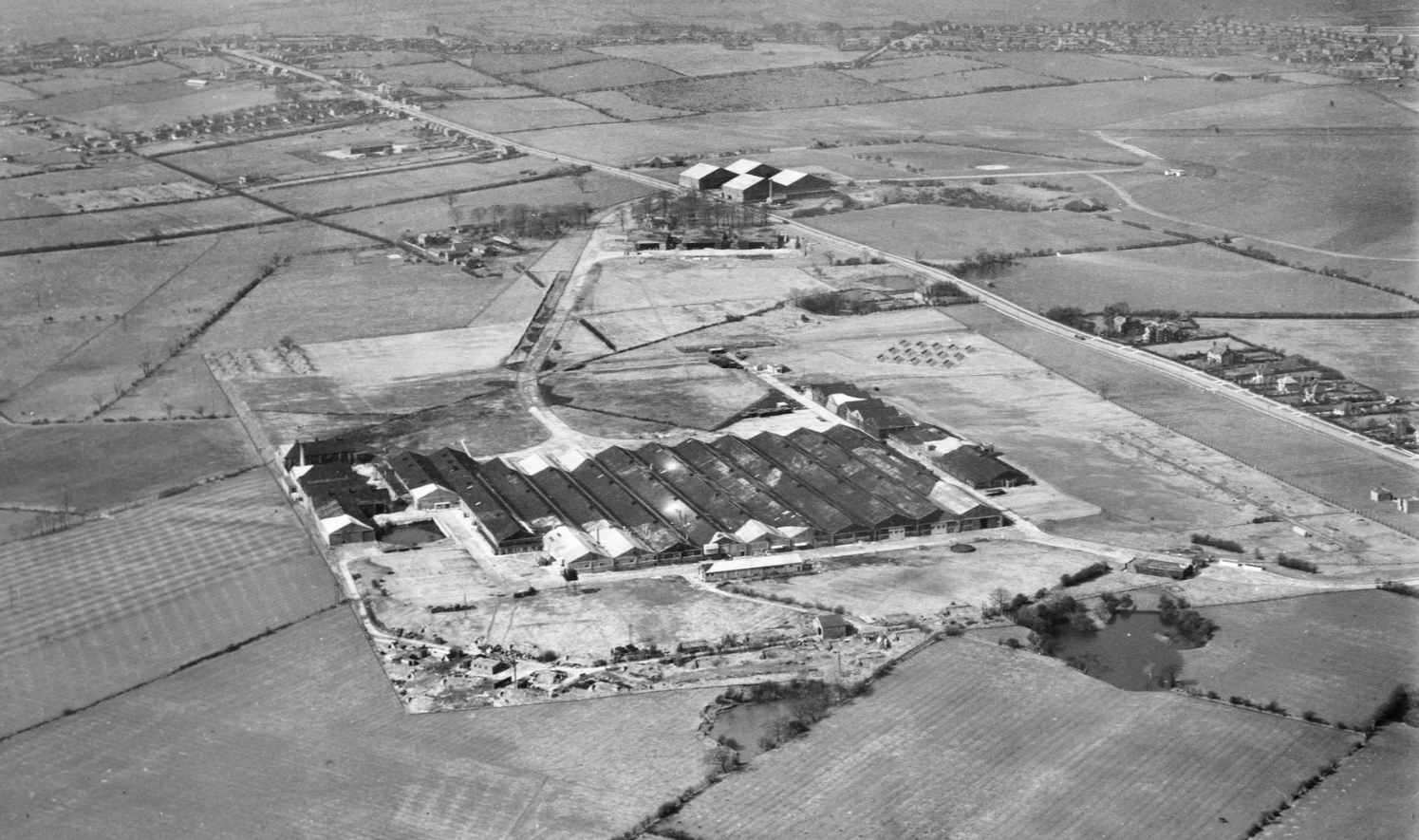
Strategic Location and Integration with Meir Aerodrome
The proximity of the Rootes Factory to Meir Aerodrome was a significant advantage. This strategic location allowed for the efficient transportation of completed aircraft to the aerodrome, where they could be quickly assembled, tested, and deployed. The integration between the factory and the aerodrome streamlined the production process, reducing the time from assembly to operational deployment.
The close collaboration between the Rootes Factory and Meir Aerodrome exemplified the coordinated effort required to support the RAF during the war. Aircraft produced at Blythe Bridge were flown directly from Meir Aerodrome to various fronts, ensuring that the RAF had a continuous supply of modern aircraft to sustain its operations.

Staffordshire Potteries, MeirAn aerial view looking north-east over the Staffordshire Potteries factory site at Meir, with houses on Edenhurst Avenue and Applewood Drive on the far side of the A500. The factory site is now occupied ...View Full Resource on Staffordshire Past Track
Post-War Period and Decline
Following the end of hostilities in 1945, Meir Aerodrome was no longer needed for military purposes. The Royal Air Force (RAF) began the process of demobilisation, which involved scaling down operations, repatriating personnel, and dismantling or repurposing military infrastructure. This process was gradual, extending over several years as the aerodrome transitioned back to civilian use.
Significant economic difficulties across the United Kingdom marked the post-war period. The nation faced the enormous task of rebuilding and recovering from the extensive damage and disruption caused by the war. Resources were scarce, and the focus was on economic recovery and reconstruction. This economic context had a direct impact on Meir Aerodrome, which struggled to secure the necessary investment to maintain and develop its facilities.
In the immediate post-war years, there was a reduced demand for aviation services. The commercial aviation industry was still in its infancy, and the transition from military to civilian aviation did not happen overnight. Many of the aircraft used during the war were unsuitable for peacetime commercial use, and the development of new aircraft for civilian purposes took time. Consequently, Meir Aerodrome saw a decline in activity as it attempted to adapt to the new economic and aviation landscape.
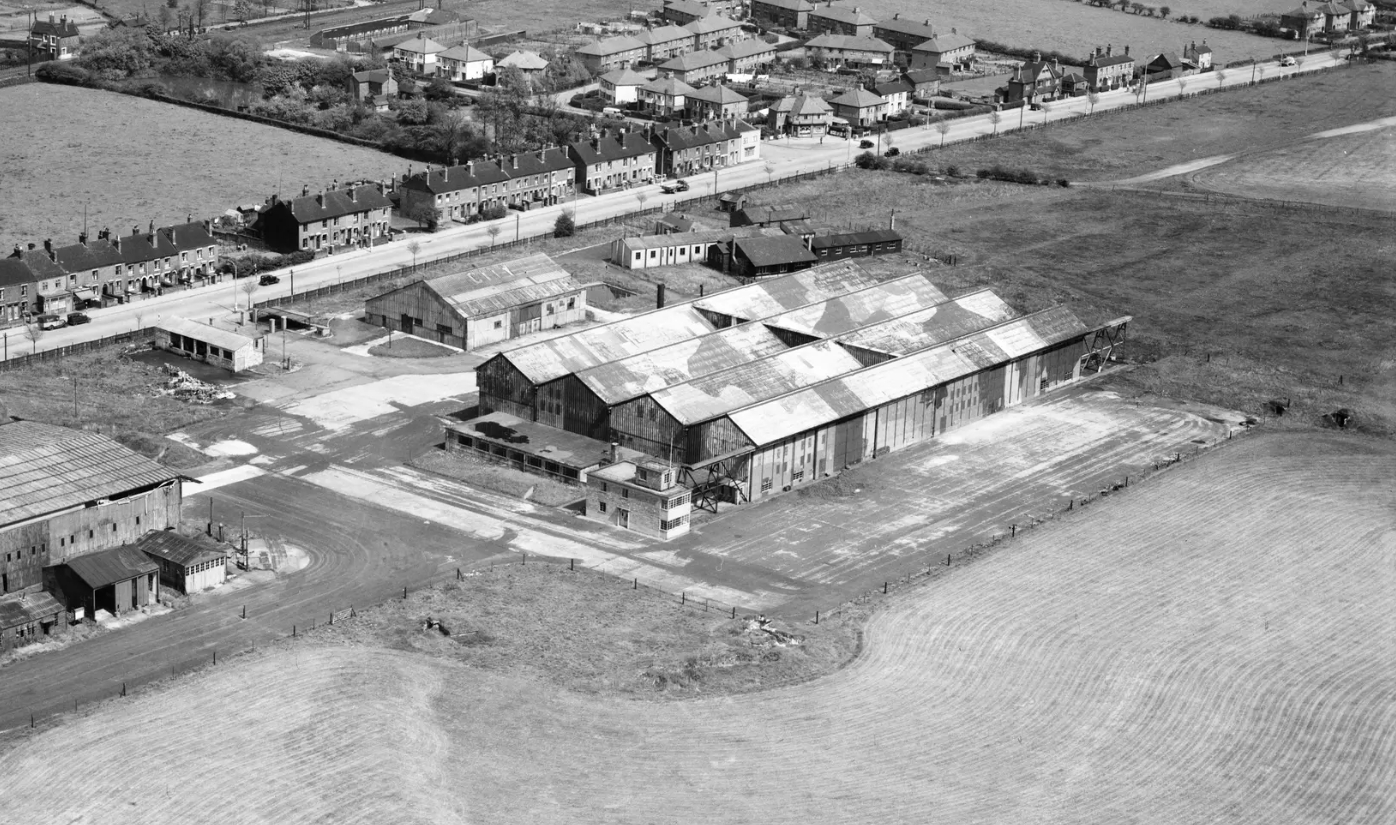
Decline of Facilities
As a result of these economic challenges and reduced demand, many of the facilities at Meir Aerodrome fell into disrepair. Without sufficient funding and with a lower level of activity, the maintenance of runways, hangars, and other infrastructure became increasingly difficult. The aerodrome's once-bustling environment gave way to a period of stagnation, with many buildings and structures left unused and deteriorating.
Despite the overall decline, there were efforts to revitalise Meir Aerodrome during the post-war period. Local aviation enthusiasts and small commercial operators continued to use the airfield for private flights, training, and occasional events. However, these efforts were often hampered by the broader economic conditions and the lack of significant investment from the council or other sources.
Commercial Struggles and Competition
The 1950s and 1960s were difficult years for Meir Aerodrome. During this period, the rise of larger, more modern airports in the region significantly impacted Meir Aerodrome's ability to attract and retain commercial traffic. Despite efforts to revitalise the site and attract business, including hosting air shows and other events, the aerodrome struggled to compete. The limited infrastructure and lack of investment further hindered its ability to adapt to the changing aviation landscape.
The post-war era saw the development and expansion of several larger airports in the region, such as Manchester Airport and Birmingham Airport. These airports offered more extensive facilities, longer runways, and better connectivity to national and international destinations. As a result, they attracted the bulk of commercial air traffic, which led to a decline in activity at smaller aerodromes like Meir.
Meir Aerodrome's infrastructure had not seen significant upgrades since the end of the Second World War. The runways, hangars, and support facilities were increasingly inadequate to meet the demands of modern aviation. Larger airports benefited from continuous investment and development, which Meir Aerodrome lacked. This disparity made it difficult for Meir to compete effectively.
Efforts to attract investment to modernise Meir Aerodrome were largely unsuccessful. The Stoke-on-Trent Council, despite recognising the potential economic benefits of a thriving aerodrome, failed to secure the necessary funding for significant upgrades. This lack of investment meant that essential improvements, such as extending runways, upgrading hangars, and enhancing passenger facilities, were never realised.
To rejuvenate the aerodrome, various initiatives were undertaken. Air shows and aviation-related events were organised to draw public interest and demonstrate the aerodrome's potential. These events attracted large crowds and temporarily boosted activity at Meir. However, these efforts were not enough to sustain long-term commercial viability.
The aerodrome's inability to handle larger, modern aircraft was a significant competitive disadvantage. While larger airports could accommodate a wide range of aircraft, Meir's limited runway length and outdated facilities restricted the types of planes that could operate from the site. This limitation further reduced its attractiveness to commercial airlines and businesses.
As a result of these challenges, Meir Aerodrome saw a steady decline in activity throughout the 1950s and 1960s. The site became increasingly reliant on local flying clubs, private pilots, and occasional events. The once-bustling aerodrome struggled to maintain its relevance in a rapidly evolving aviation industry.
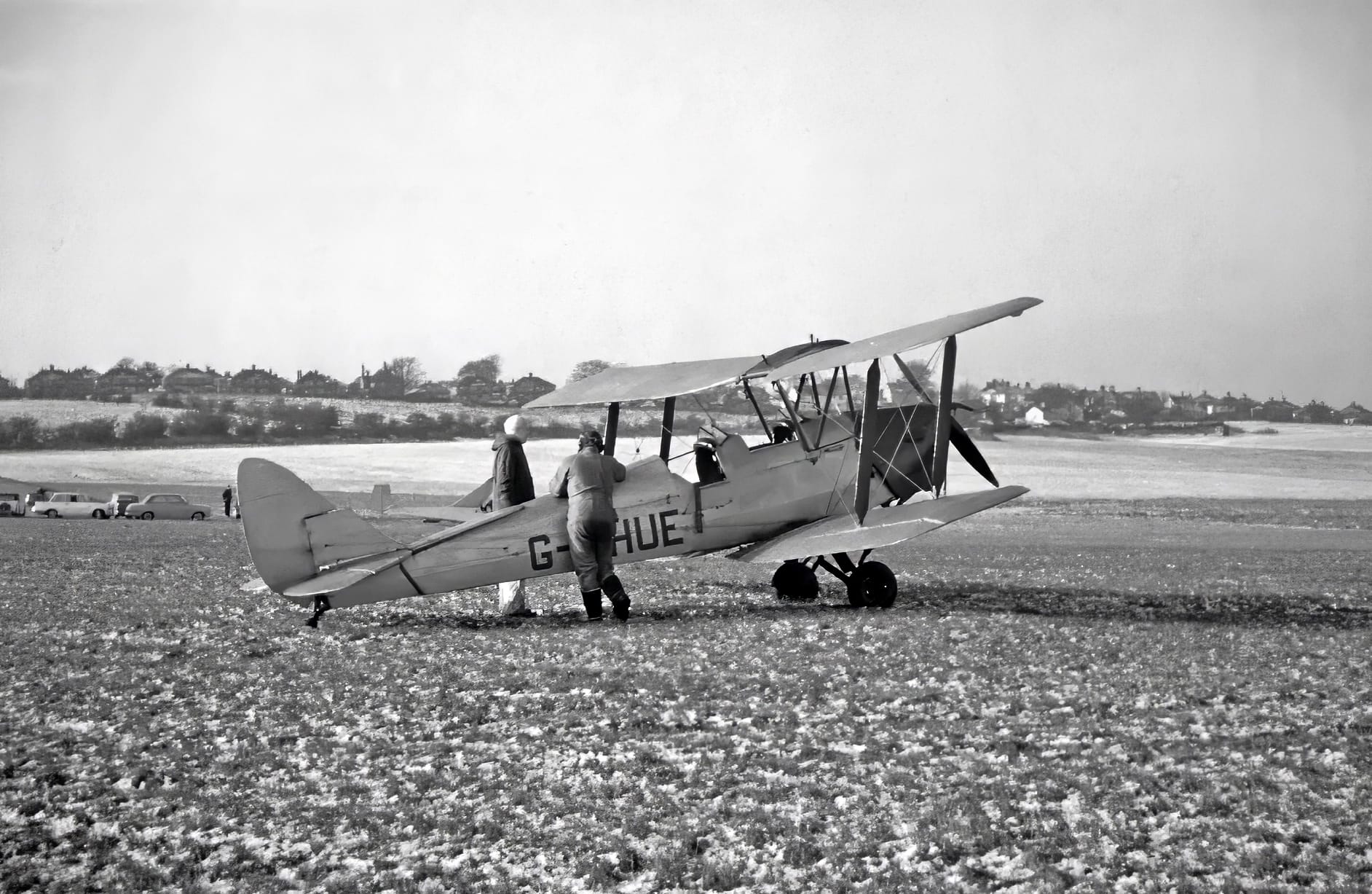
Reasons for the Closure of Meir Aerodrome
The closure of Meir Aerodrome was influenced by several key factors that cumulatively led to its decline and eventual cessation of operations.
After the Second World War, the British economy faced significant challenges. Resources were primarily allocated for national reconstruction and recovery efforts, leaving limited funds available for aviation infrastructure. Smaller aerodromes like Meir struggled to secure the necessary investment for maintenance and modernisation. The economic constraints made it difficult for Meir Aerodrome to compete with better-funded and larger airports.
The post-war period saw a shift in aviation demand. As commercial aviation evolved, larger airports with more comprehensive facilities and better connectivity began to dominate the industry. Meir Aerodrome, with its relatively modest facilities, found it challenging to attract and retain commercial traffic. The reduced demand for aviation services at smaller aerodromes contributed to Meir's declining viability.
Meir Aerodrome's infrastructure, which had not seen significant upgrades since the war, became increasingly inadequate for modern aviation needs. The runways, hangars, and support facilities were not equipped to handle the larger and more advanced aircraft that were becoming standard in commercial aviation. This limitation severely impacted Meir's ability to serve as a competitive hub for aviation activities.
The development of larger airports in the region, such as Manchester and Birmingham, drew commercial operators away from Meir. These airports offered superior facilities, more robust transportation links, and a wider range of services, making them more attractive to airlines and passengers. The competition from these well-equipped airports was a major factor in Meir's declining traffic and relevance.
Efforts to attract investment and revitalise the aerodrome were hampered by financial constraints and limited support from both public and private sectors. Without the necessary investment, Meir Aerodrome could not modernise its facilities or expand its services. The lack of financial backing meant that crucial upgrades and improvements were not feasible, further diminishing the aerodrome's operational capacity and appeal.

Meir Aerodrome and Tiger MothA Tiger Moth bi-plane prepares for take-off at Meir. This was a training aircraft and glider tug for the ATC.A pub named after the famous bi-plane once stood on Sandon Road, Meir. A reflection of Meir's ...View Full Resource on Staffordshire Past Track
Failings of Stoke-on-Trent City Council
One of the significant factors in the closure of Meir Aerodrome was the failure of the Stoke-on-Trent Council to recognise and capitalise on the aerodrome's potential. The council's lack of vision and commitment to supporting the aerodrome as a vital part of the region's infrastructure contributed to its decline. Key failings included:
- Underestimating the Economic Impact: The council did not fully appreciate the economic benefits that a thriving aerodrome could bring to the region, including job creation, tourism, and improved transportation links.
- Inadequate Advocacy and Support: There was insufficient advocacy from the council to secure government or private sector investment that could have revitalised the aerodrome.
- Missed Opportunities for Development: The council failed to explore and implement strategic plans that could have integrated the aerodrome into broader economic development initiatives.
- Neglect of Maintenance and Upgrades: The lack of council-driven initiatives to maintain and upgrade the aerodrome's facilities led to its infrastructure becoming outdated and uncompetitive.

Meir Aerodrome and GliderA glider prepares for take-off at Meir Aerodrome.The Potteries once had its own airport, one of the first in the UK, and it was used by passengers on the route from Speke to London. It was in use from ...View Full Resource on Staffordshire Past Track
Final Years and Closure
In its final years, Meir Aerodrome saw a steady decline in activity. Despite attempts to host events and attract new business, the aerodrome could not overcome the economic and infrastructural challenges it faced. By the 1960s, Meir Aerodrome's operations had significantly reduced. While local aviation enthusiasts and small-scale operators continued to use the site, the overall level of activity was low. Attempts to rejuvenate interest through air shows and other events were not sufficient to reverse the trend of declining usage.
The aerodrome struggled to compete with the more attractive, better-funded airports in the region. The limited commercial traffic further exacerbated the financial difficulties, making it increasingly unsustainable to operate the aerodrome.
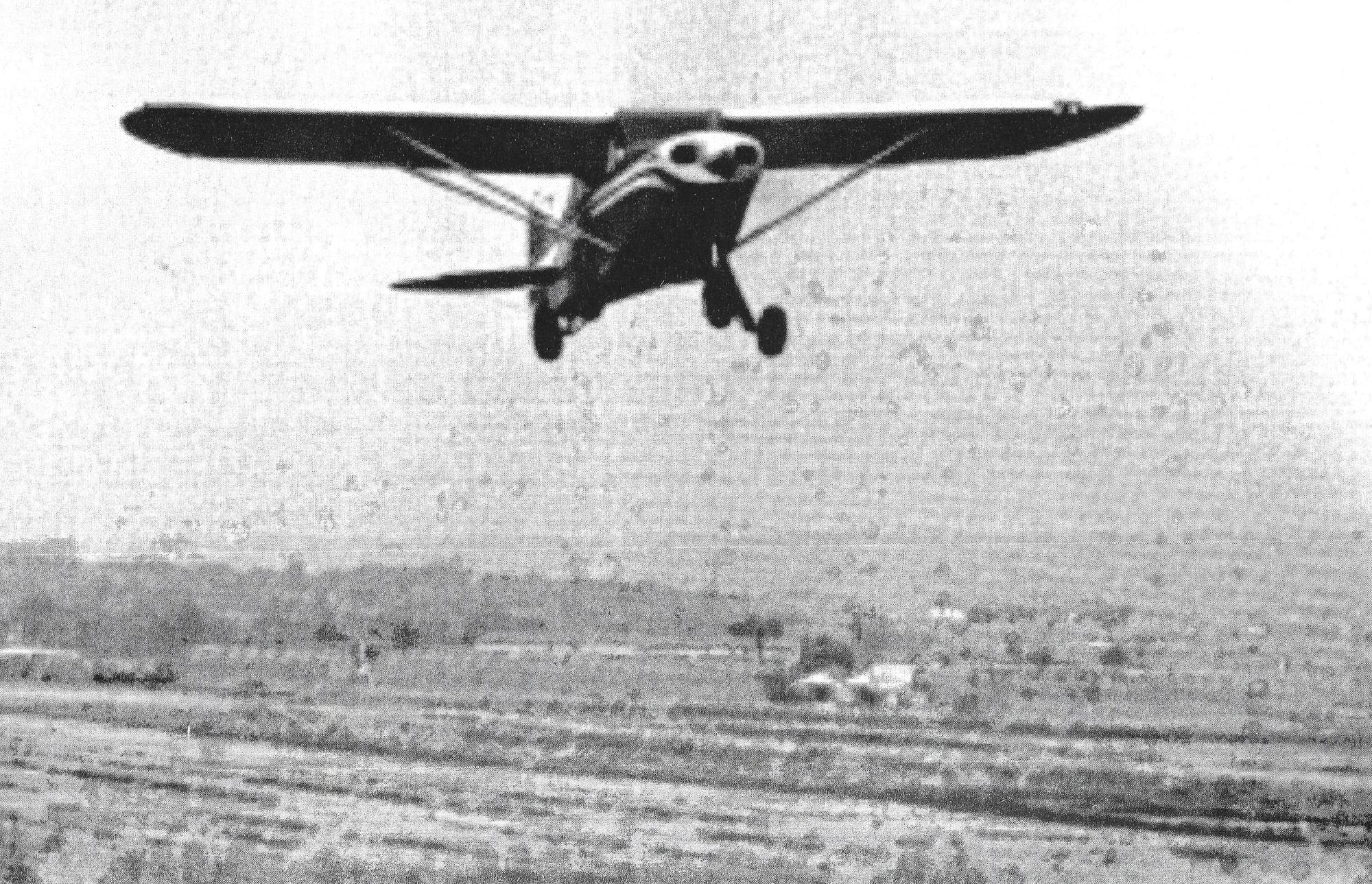
The decision to close Meir Aerodrome was ultimately made due to the unsustainable nature of its operations. The continuous decline in aviation activities, coupled with the lack of investment and support, led to a point where keeping the aerodrome operational was no longer viable. By the late 1960s, the site was gradually repurposed for industrial and commercial use, marking the end of its era as an active aerodrome. The last official flight was on 16 August 1973 when Fred Holdcroft flew a Piper Tri-Pacer carrying a Sentinel journalist to Manchester.
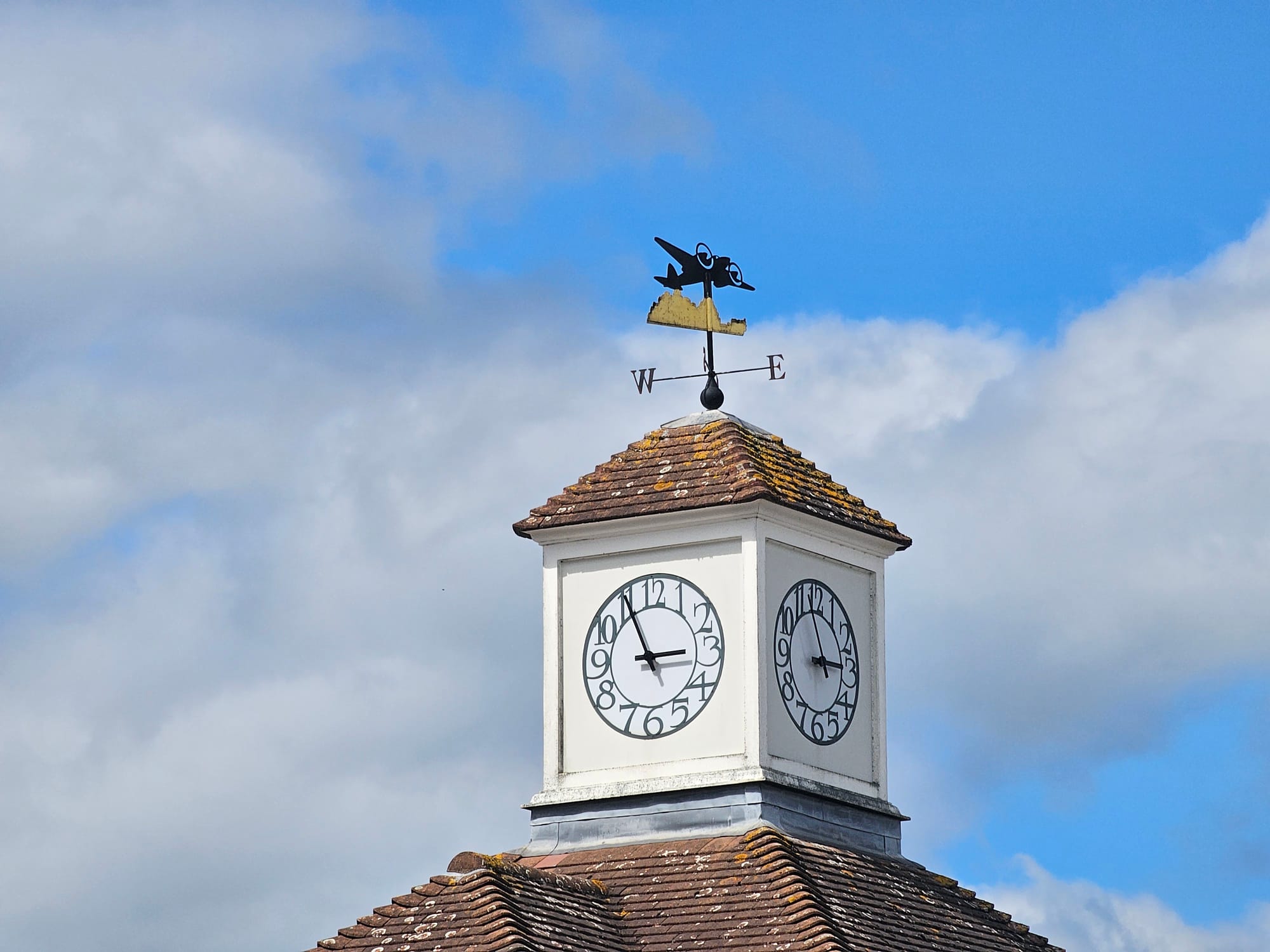
Redevelopment and Current Use
The area that once housed Meir Aerodrome has seen significant redevelopment over the past few decades. The land has been repurposed to support various industrial and commercial activities, contributing to the local economy. Notable developments include business parks, retail outlets, and other commercial enterprises that have taken the place of the former airfield.
Despite the extensive redevelopment, elements of Meir Aerodrome’s aviation heritage remain. One of the most notable remnants is the aeroplane weathervane situated atop the Tesco store. This weathervane serves as a nostalgic reminder of the site's historical roots in aviation. It symbolises the community's recognition of the aerodrome's past and its contributions to both world wars and civil aviation.
Future Prospects
Looking ahead, there are ongoing discussions about further commemorating the history of Meir Aerodrome. Local historical societies and aviation enthusiasts continue to advocate for the preservation of its legacy. Potential initiatives include the establishment of a museum or memorial on the site to educate future generations about the aerodrome’s significant role in aviation history.
There is also interest in integrating more historical markers and informational displays throughout the redeveloped area. These efforts aim to balance contemporary economic development with the preservation of local heritage, ensuring that the story of Meir Aerodrome remains accessible and appreciated.
For a fantastic and detailed account of Meir Aerodrome, please check out William Cooke's incredible book Wings Over Meir.


Don't forget to head over and check out From The Stork Bespoke Baby

Check out my online shop for my local photography and art
Check out my recommended reading list
